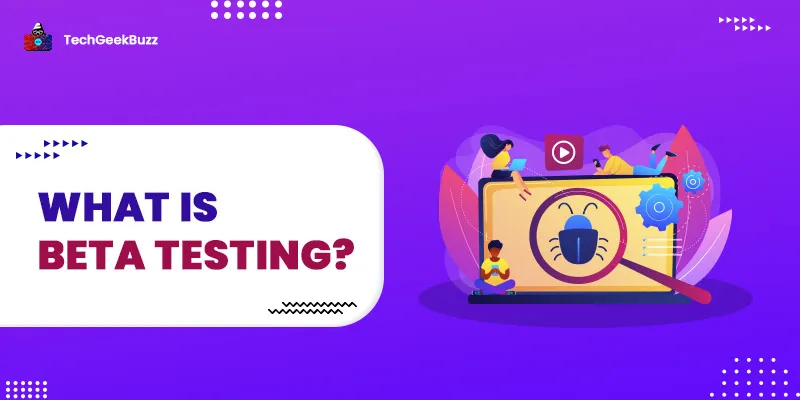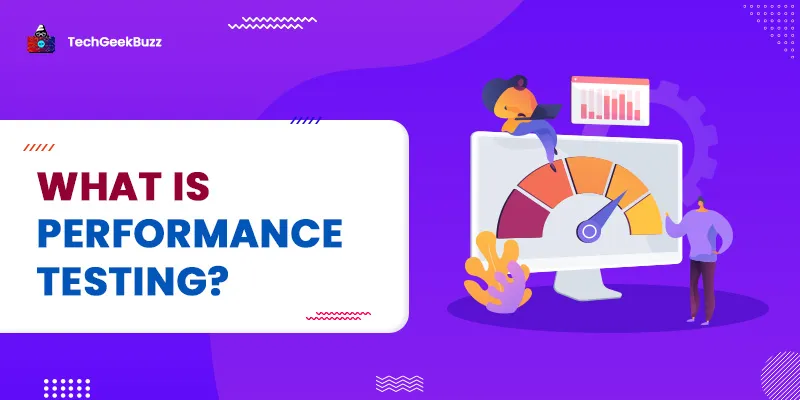Generally, a team of professional testers conducts testing on software products to ensure their quality standards are met, they are free from defects, and they comply with the client’s or end-user's requirements.
Performing testing on software products uncovers potential errors and defects and missing functionalities. As a result, software testing is an inevitable facet of the software development process that ensures the delivery of high-quality software products.
There are different levels of software testing, namely unit testing, integration testing, system testing, and user-acceptance testing. Beta testing is among the types of user acceptance testing, where end-users validate the software product for its usability, reliability, functionality, and compatibility.
This blog post aims at explaining beta testing and its various aspects.
Let us delve into the topic without further ado!
What is Beta Testing?
It is a type of user-acceptance testing where end-users get an opportunity to use the software product in the production environment to discover bugs or defects before the final release. Here, end-users imply a small group of real users who are actually going to use the software product. It is a final type of testing that the software product undergoes before releasing it to all the target audiences.
The foremost aim of this type of software testing is to identify usability issues or bugs in the software product that were left uncovered in the preceding testing types. It is called beta testing because a restricted number of real users test the beta version of the software product.
Now, it is bound to raise a question in your mind: what exactly is the beta version?
Well, the beta version of any product is its early release which is almost ready to go live but may have some defects or issues.
More interestingly, this type of testing works on 3Rs, namely Real product, Real Environment, and Real Users. Real users who carry out testing are referred to as beta testes.
In addition, the production environment runs on the same hardware, network, and various other aspects as the final release. Consequently, we can say that it is the first chance to validate the software product for reliability and security, as it cannot be done in the stage or lab environment.
Characteristics of Beta Testing
The following are the crucial traits of beta testing:
- It is the final testing the real users, stakeholders, or clients conduct before making the software product live to a wide audience.
- It is black-box testing that checks the software product for usability, reliability, security, and robustness.
- This type of testing takes place before alpha testing , one of the crucial types of user-acceptance testing.
- It provides an overview of the true experience a group of real users has gained while testing the product.
- Through this type of testing, it becomes possible to check the compatibility of the software product to a greater extent because it involves the use of real platforms and devices.
- It discovers bugs and errors in the final software product that remained uncovered in the previous types of software testing .
- It does not require a testing environment since users conduct it in the production environment.
Beta Testing Lifecycle
The following are different steps involved in the lifecycle of beta testing:
1. Planning
Like all other software testing types, this type of testing also requires proper planning. In this stage, the testing team defines the goal of testing and outlines the testing strategy. Moreover, the team decides the duration of testing and other necessary aspects associated with testing.
2. Participant Recruitment
Once the testing team defines the goals and creates the testing strategy, they move on to select or recruit a group of real users to test the software product. However, the recruitment and group of real users may vary according to organizations.
3. Product Launch
After the recruitment of real users for testing, the beta version of the software product is installed on the client’s or end user’s side so that they can test it for reliability, security, compatibility, and robustness.
4. Collect and Evaluate Feedback
Once the group of real users finishes testing, the testing team collects feedback from each of the users involved in testing. Based on feedback, the development team makes changes to the software, and the testing team again tests it for its correctness.
5. Closure
This is the final step of the beta testing lifecycle. When the development team fixes all the issues or bugs, and the process meets the exit criteria, the product manager rewards the teams and ends the testing process.
When to Perform Beta Testing?
As discussed earlier, user acceptance testing is the rearmost level of software testing, and alpha testing and beta testing are its crucial types. It's worth noting that beta testing occurs only after alpha testing. By the time the software product undergoes beta testing, it is expected to complete 90% to 95%. Once done, it is important to review the software product against the entire checklist before the final release.
Some of the essential aspects of the checklist are as follows:
- All the components of the software product are ready to undergo testing.
- Documentation containing the guide on setting up, installation, usage, and uninstallation is ready to provide to real users who perform testing.
- All the features of the software product are intact and working correctly.
- Identify methods to collect user feedback before making the software product live.
Furthermore, the duration of beta testing is usually one or two test cycles, where each cycle lasts 4 to 6 weeks.
Entry and Exit Criteria
Entry criteria are conditions that should be met before starting any type of software testing. Meanwhile, exit criteria are conditions that should be met before ending any type of software testing.
Entry Criteria
- Singing off the document from alpha testing.
- The software product’s beta version should be ready.
- The production environment should be ready to make the software product live to the public.
Exit Criteria
- The feedback report containing feedback from all the users involved in testing should be ready.
- All the major and minor issues identified by the real users should be fixed.
- The beta test summary report should be ready.
Who are Stakeholders and Participants in Beta Testing?
In this type of testing, stakeholders are the product management team, the user experience team, and the quality management team. All three teams work closely to deliver high-quality software products. The participants are the real users of the software product.
Best Test Strategy
The following is the strategy for performing beta testing:
- Business objectives for the software product.
- Scheduling the entire testing phase, testing cycles, and the period required for each test cycle.
- Best test plan.
- A testing procedure that every participant involved needs to follow.
- Tools required to collect feedback, identify bugs, and gauge productivity.
- The closure of the testing process, i.e., when and how to terminate the testing process.
Types of Beta Testing
In general, there are six different types of beta testing, each of which differs by the group of real users involved in the testing process. Let us discuss each of these types below.
- Open Testing: In this type of testing, an organization exposes the software product to a large number of people for testing before its final release. It involves extensive participation of real users who actually use the software product and provide feedback.
- Closed Testing: This type of testing is in contrast to the above one. It involves testing the software product by only a limited or restrictive number of real users. The choice of real users entirely depends on an organization.
- Traditional Testing: In traditional testing, an organization releases the software product to the public or makes it live in the market. Later, the organization collects feedback from users and makes changes to the software product accordingly.
- Public Testing: Public testing is analogous to open testing. In this type of testing, the software product is made public to a large number of real users through different online channels. Further, the organization collects feedback from users and implements the changes in the software product accordingly.
- Technical Testing: Technical testing involves the internal group of an organization that conducts testing on the software product. Based on the feedback of internal members or employees, the organization implements the modifications in the software product.
- Focused Testing: Focused testing primarily concentrates on a particular feature or component of the product. This type of testing involves releasing the software product to the market and collecting feedback from users to improve it accordingly.
Advantages and Disadvantages of Beta Testing
Let us now shed light on some notable upsides and downsides of this type of testing.
Advantages
- Through this type of testing, organizations can ensure maximum customer satisfaction.
- Since real users validate the software product, there are fewer chances of product failure.
- Feedback from real users helps in improving the quality of the software product.
- It reveals potential bugs and errors that were not discovered in the previous types of testing.
Disadvantages
- As the real users perform testing, the development and testing teams do not have control over the testing process.
- The real users involved in the testing process should have a thorough knowledge of the working of the software product in order to perform testing efficiently.
- The testing process may require time to finish since it involves real users or clients. Hence, the release of the final product may delay.
- Since each user tests the software product in a different environment, it becomes pretty difficult to follow the bugs and errors.
- There's a good probability you'll encounter duplicate errors or issues.
Challenges
Some of the major challenges of beta testing are as follows:
- Determining and recruiting participants for the testing process. This is because participants need to have an in-depth understanding of the working of the software product.
- It may be tough to find hidden faults and errors in some cases.
- Collecting feedback, identifying the relevant ones, implementing them, and ensuring customer satisfaction is pretty challenging.
- Reporting feedback to the appropriate teams is yet another major challenge.
- It is not always the case that there is a well-defined plan for beta testing.
When Does Beta Testing Fail?
This type of testing may fail in the following scenarios:
- Lack of a well-defined test plan.
- Selection of ineffective tools.
- Tight deadlines.
- Extremely short or long test cycles.
- Ineffective feedback management.
- Poor test management.
- The inappropriate number of participants.
Conclusion
Beta testing plays a vital role in SDLC since it ensures maximum customer satisfaction. A small group of real users who are actually going to use the software product conducts testing and provides their feedback to an organization. Based on feedback, the organization implements changes in the software product and ensures maximum customer satisfaction.
We hope that this article has provided you with enough information about the topic. If you have any questions or concerns, please let us know in the comments section.
People are also reading:



![What is Waterfall Model? [Phases, Pros, & Cons]](/media/new_post_images/Waterfall_Model.webp)
